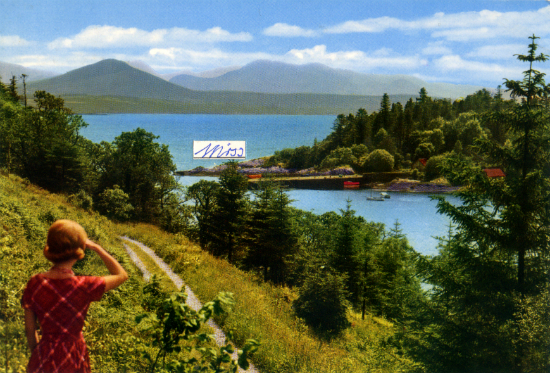
Charlie Booth, Curatorial Trainee at South Square Gallery in Thornton, Bradford. writes about the Roy Voss exhibition beginning this week …
MISS is a two part commission that takes the form of an exhibition in South Square Gallery and artworks sited around Brönte Parsonage Museum which will open on the 6th June and run until 20th July. The project is designed to build links between the two villages of Thornton and Haworth and celebrate the beauty of the surrounding landscape and the heritage of the local area.
Roy Voss, a London based artist will use the Brönte Meadow to site a series of ‘signs’ or ‘notices’ amongst the natural landscape. These will display the word ‘Miss’ referring both to the historical context of the Bronte Parsonage and the nature of signs themselves.
Whilst we were installing the signs Roy Voss and I took some time out to discuss the upcoming show. I began by asking him to expand on the significance of the word ‘Miss’:
Given we are in Brönte country, there is an idea of missing the three Misses. Miss is simply a title that suggests singleness or youth. It could also suggest a longing for someone or something, but it has several other meanings of course: To not to hit a target, to fail to be somewhere, to overlook or not comprehend something, to not take a chance, to fall short.
Made from untreated steel, the signs will gradually change colour and texture as they begin to rust. I think his choice of material is particularly fitting for the context of the piece, when you consider the surrounding industries on Thornton Road. By locating manufactured steel structures directly in to the picturesque rural landscape, I read in Voss work the connotations of the historical landscape of the area; a history of industry and manufacturing in the heart of the picturesque Yorkshire countryside.
Running simultaneously alongside the work at the Brönte Parsonage, Voss will open an exhibition within the South Square Gallery. A theatrically over-sized backdrop cuts diagonally across the first space, emphasising the domestic scale and feel of the room. Voss describes the work within the gallery:
The painted image is a kind of landscape, but with the appearance of a ubiquitous brick wall – landscape as wall, wall as backdrop – and has an available back and front. An ornamental bouquet of flowers, elevated by a simple stand, becomes a standard lamp, with its bare bulb labouring against the back of the canvas like a diminutive sun. Beyond this a sculpture of a doorframe suggests movement from one physical or psychological place to another and signals a shift in scale in the second space.
Featured in the gallery are a series of collages which will each have a word cut from the back of a posted postcard reversed and then reinserted so that it appears within the picture on the front of the card. Synonymous with the tourist industry, postcards are used as mementoes of the picturesque settings of destinations, but also as correspondence between absent loved ones. In my opinion, by selecting singular words frequently written on the back of postcards, such as ‘MISS’, Voss is highlighting the absence of the intended receiver.
Considering the emphasis on the singular word ‘MISS’ I asked Voss, where he takes inspiration from for his work/where does he source the words from?
I like words that have more than one meaning. Sometimes I simply pick the best ones, like choosing pebbles on a beach. At other times I find a word that functions to describe something of a location or topography.
‘The mass-produced postcards – sent with love, a need to communicate, or a sense of duty – are used up, out of date and out of time. In an age of super-speed microchip messaging and instant communication, there is something melancholic about the brief, blue biro messages.
Within some of Voss’ previous work there is a commentary on English tourism marketing strategies. By simultaneously emphasising the depiction of the ‘ideal’ countryside, as seen in his picturesque epic scenery, he suggests that this ‘ideal’ is a façade to the reality of the countryside. A postcard selects what the visitor wishes to remember about the visit – an idyllic holiday – or it serves to communicate with the absent loved one that they missed out, ‘wish you were here’. The picture postcard ignores the many other less attractive issues prevalent in rural communities and constructs an idealised memory of the location.
Accompanying MISS, Voss has created a special edition print booklet which will be available at sites, South Square gallery and Brönte Parsonage Museum.